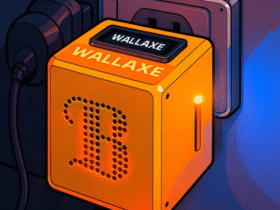Bitcoin (BTC) faces the most marked episode of capitulation of the current cycle, with a visible increase in loss-selling among short-term investors.
These movements, according to on-chain analysts, could anticipate a major market turnaround or, in the worst case, the confirmation of a bear market or “crypto winter” if certain levels do not recover.
In this context, the price of bitcoin is trading below $90,000, while the cost base of short-term holders It is around $109,000.
This increasingly widening differential reflects that a large group of participants is selling below the price at which they acquired their BTC.
Short-term bitcoin holders sell in panic
The on-chain Bitcoin analyst known as IT Tech warned that short-term investors (STH) “are capitulating.”
In his most recent study, he explains that the graph of realized profits and losses for this group – defined as those who hold coins for less than 155 days – shows deep red bars. This is a unequivocal sign of sales with relevant losses.


According to the specialist, the deep red bars confirm “intense selling with significant losses.” In addition, it warns that there is “a peak in realized losses comparable to the large corrections of 2021 and mid-2024.”
The critical point, he emphasizes, is that The current price of bitcoin is below the cost base of short-term holders. It is located at $109,200 and is marked on the chart with a dotted blue line.
The analyst’s conclusion is categorical: “STH are panic selling, signaling a possible capitulation.”
This type of event usually marks a local bottom if the price quickly recovers the cost base. However, he warns that “failing to do so historically indicates a deeper bearish trend or confirms a bitcoin bear market.”
Technical signals align with a capitulation scenario
The behavior of the Short-Term Holder SOPR (STH-SOPR) indicator, which measures whether short-term holders of bitcoin sell at a profit or loss, reinforces the idea that the market faces systematic loss selling and is driving out fearful retailers.
This index decreased to 0.97. Values less than 1 reflect that sales are made below their purchase price.
In the most recent graph of the indicator you can see how, despite the fall in the price of BTC, the metric continued to be compressed, without showing signs of recovery.


The combination of these elements—rising realized losses, forced sales, and a persistently negative STH-SOPR—paints a scenario in which short-term holders are exerting considerable pressure. This, pushing the sector towards a bitcoin bear market.
Is it enough for a bitcoin bear market?
Bitcoin retreated from all-time highs of over $126,000 reached just over a month ago to the current area below $90,000.
Although the magnitude of the drop could suggest the beginning of a prolonged bearish cycle, several analysts agree that the typical conditions of a crypto winter have not yet been met.
The Spanish researcher Carmelo Alemán considers that the correction “is an artificial fall, a forced fall.” Although long-term holders – those who keep their coins for more than 155 days – have increased their sales by 2.81% during the last month, the analyst affirms that this volume is insufficient to generate such a deep collapse in the price, CriptoNoticias reported.
Alemán maintains that many long-term investors They have decided to take profits after months of accumulation. In his opinion, motivated more by fatigue than by a structural change in the market.
“They are selling, I think because they are tired, because they already have a profit,” he explains. However, he insists that this behavior does not correspond to a typical mass distribution pattern that usually anticipates prolonged bitcoin bear markets.
This analysis coincides with the study by the firm Glassnode, which indicates that bitcoin is in a “potential zone of demand reactivation,” especially when indicators such as the accumulation of large investors remain high.
For the CryptoQuant analyst known as MAC.D, the signal that would officially trigger a prolonged bear market period would be a sustained price drop below $78,500. This threshold corresponds to the average acquisition cost of large holders, who until now maintain a tendency of accumulation.
What should happen now?
The immediate key remains the cost base of short-term holders. As long as bitcoin stays below $106,000–109,000, selling pressure could continue.
For IT Tech, the market would only avoid a deeper downtrend if the price “quickly reclaims” the cost base of this group.
Failing this, history suggests a longer bearish phase could begin, although not necessarily a crypto winter, unless the price breaches the critical $78,500 level identified by MAC.D.
For now, the capitulation of short-term investors sets the tone for the market. The coming weeks will be decisive in determining whether the current movement represents a local bottom or the prelude to a more severe downtrend.






Leave a Reply